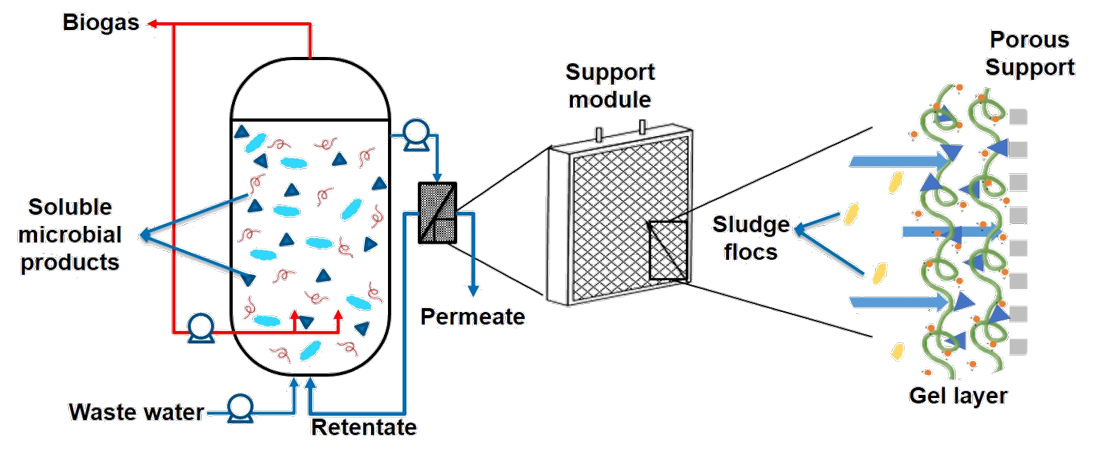Biopolymer based membranes for (waste) water filtration
Emanuel Dinis (PhD Candidate), Rob Lammertink (promotor), Huub Rijnaarts (promotor), Antoine Kemperman (supervisor), Hardy Temmink (supervisor), Cristina Cagliano (Wetsus supervisor) |
Duration: 2017-2021 |
Funding: European Union’s Horizon 2020 research and innovation program under the Marie Skłodowska-Curie grant agreement No 665874 and Wetsus, theme: Natural Flocculants. |
Introduction
Anaerobic treatment of wastewaters offers several advantages over aerobic treatment, including the production of methane that serves as a renewable energy source. However, the retention of slow-growing biomass and of the slowly biodegradable wastewater solids (to give them enough time to be biodegraded) can be troublesome. Thus, a good retention system is essential and one of the methods that can be applied for this purpose is a microfiltration membrane.
Keywords
Anaerobic bioreactor, extracellular polymeric substances (EPS), gel membrane.
Technological challenges
The anaerobic bioreactor treatment costs are high because the membranes are expensive and suffer from fouling. In aerobic membrane bioreactors, a gel layer is formed on the surface of the membrane. This is caused by gelation of extracellular polymeric substances (EPS) such as polysaccharides and proteins excreted by microorganisms. It is generally accepted that this gel layer dictates the filtration process, i.e. determines the retention of compounds and the permeability. In this project, it is investigated whether EPS gelation on cheap supports also occurs in anaerobic bioreactors and whether these layers can act as a membrane to retain sludge particle sin the reactor.
Research goals
The objective of this project is to create a gel layer of anaerobic EPS on a porous support as a cheap alternative for expensive membranes. This is accompanied by several challenges and research questions:
• Can a suitable gel layer be formed from anaerobic EPS, what is the composition and structure of this gel layer and what is the effect of environmental conditions such as temperature and cation concentrations?
• Under which operational conditions and with what type of porous carrier material is the performance of this layer optimal with respect to solids retention and permeability?
• How can a gel layer be formed in-situ and what is its long-term stability?

